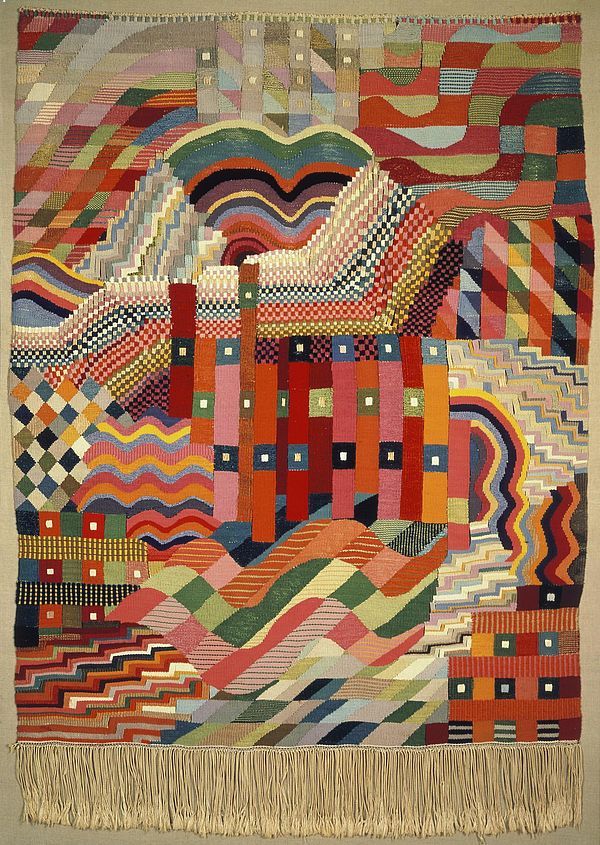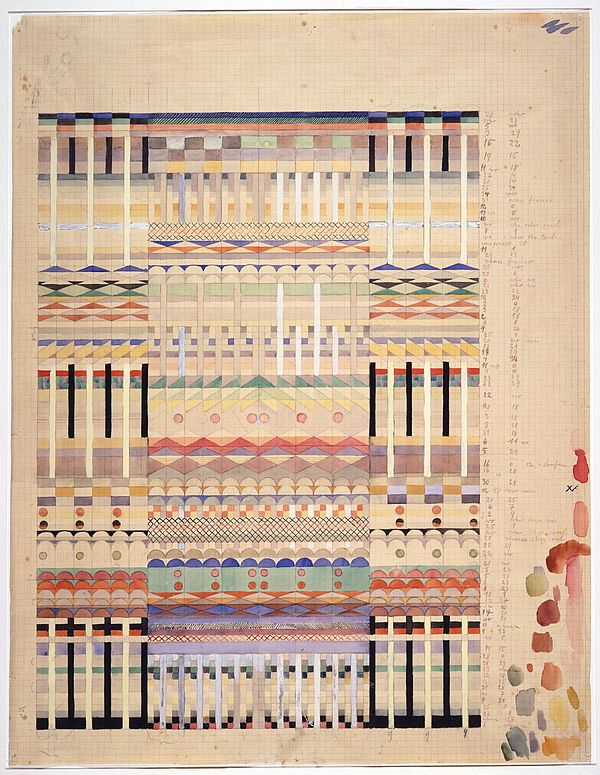Weaving
1919–1933
The weaving workshop was one of the most successful and productive workshops at the Bauhaus, experimenting with both traditional craft techniques and industrial methods.

Masters and Teachers
Johannes Itten
Georg Muche
Gunta Stölzl
Lilly Reich
Anni Albers
Otti Berger
[Translate to English:] Headline
The weaving workshop opened its doors in 1919 under its master of form, Johannes Itten. Until 1925, the craftsmanship aspects of the workshop were taught by the master of works, Helene Börner. In 1920, the women-only textile class was merged with the weaving workshop. In addition to weaving, the female students learned other textile techniques such as crochet, macramé, spinning, embroidery, appliqué and painting and spraying techniques.
From 1921 to 1927, Georg Muche was the head of the weaving workshop. Muche ensured that goods were produced in bulk, thus increase the workshop’s overall profitability. He also turned away from the traditional weaving loom and moved towards industrial weaving techniques. This led to the production of the so-called Bauhaus fabrics.
Female students such as Gunta Stölzl, who later became the head of the weaving workshop, taught themselves many technical and practical skills such as dyeing. In terms of form, the female students oriented themselves on the lessons of Johannes Itten, Paul Klee and Wassily Kandinsky, transferring their concepts of colour and form to the weaving loom.
The mass production of suitable decorative fabrics, wall coverings and upholstery fabrics for modern interior designs such as that of the Sommerfeld House or the prototype Haus am Horn were manufactured in the weaving workshop. The development of fabrics that were economical to produce as well as those made of synthetic fibres was intensified in Dessau under the second Bauhaus director, Hannes Meyer. The interior designer Lilly Reich succeeded Gunta Stölzl after the latter’s departure in 1931. The weaving workshop was one of the most productive and successful workshops at the Bauhaus.



